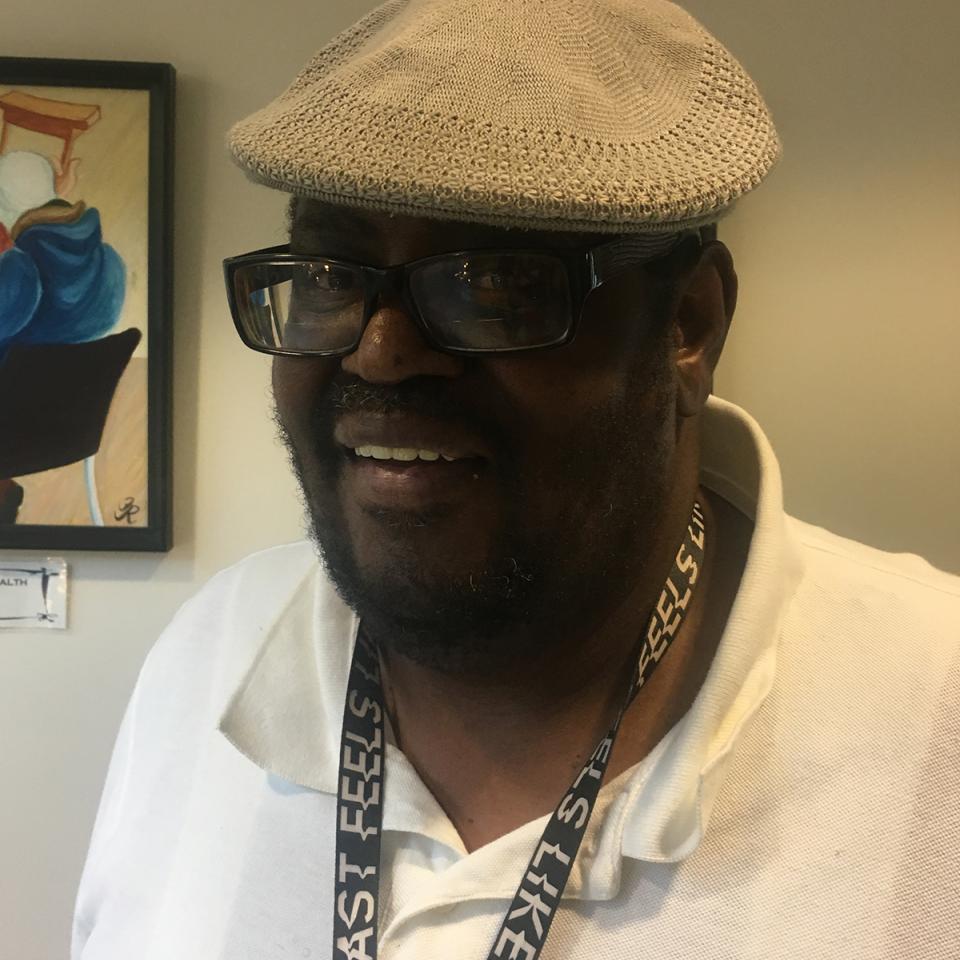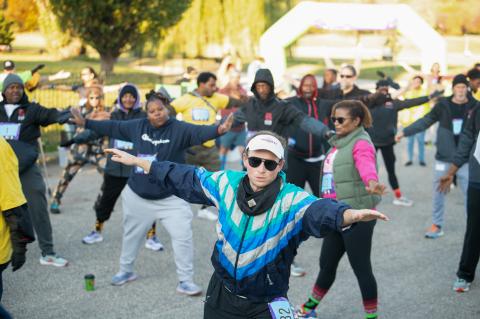
Who are the “People We Serve”?
This past summer James Barnes and La Keesha Arrington-Vega joined forces on an agency workgroup to make sure that everyone who comes to us gets the care they need.
“When people need help, we won’t turn them away,” Board member and client James Barnes says. “If we can’t meet your needs, then we will find someone who will. The goal is to never leave someone stranded.”
During the recent strategic planning process, staff said they needed more guidance around how to determine a person’s eligibility for our services. So, in the first year of implementing the plan, we formed a workgroup to provide just that. The workgroup included eight staff members, two clients and two board members.
While the agency uses a federal definition of homelessness, we each interpret homelessness in subtly different ways.
Over the course of several months, the “People We Serve” workgroup developed guidelines to help staff determine who is eligible for our services, how to manage changes in housing situations while receiving care and who is ready to transition to community providers.
Client voice and perspective was an important part of that work. With four years of client advocacy experience, James jumped right in. “My role in the workgroup was to represent the needs of clients and help staff understand what clients are going through,” he says.
The guidelines are simply that—guidelines. They don’t replace individual judgement or restrict services.
“Our goal is to help people get stable and healthy. If a client is ready to transition into mainstream care, that means we’ve accomplished that,” clinic manager La Keesha Arrington-Vega explains. “Of course, if a client isn’t ready to transition, we won’t make them. We will continue to support them.”
The guidelines are just one way to help staff and clients talk about options and transitions more easily. Our case management team has also created a referral guide to easily connect clients to community resources. As we work to expand access to services under our strategic plan, you can expect to see more of these types of resources for staff and clients alike!
More Recent News
At our annual staff holiday party, we take time to recognize and celebrate staff members who best represent our Core Values, as well as one recipient of the Von Bradshaw Award, named after Delvonia "Von" Bradshaw, who passed away in 2024 and truly held the principles of Health Care for the Homeless to heart. Please congratulate your colleagues when you see them!
Those of us in the Health Care for the Homeless community share a belief in something powerful: that everyone should have a place to call home.
Hope for that vision isn’t passive. It’s something that clients, staff and community supporters make possible together.
With SNAP benefits in Maryland facing uncertainty, many families are wondering how they’ll put food on the table. Here are ways Health Care for the Homeless is helping, as well as a list of local food assistance resources.
On Saturday, November 1, more than 300 runners, walkers, friends and volunteers gathered in Patterson Park for the 2025 Rock Your Socks 5K. Read all about this year's awesome event!




